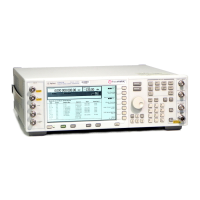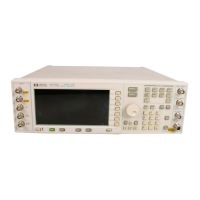78 Chapter 3
Basic Operation
Using Security Functions
Removing Sensitive Data from Memory
When moving the signal generator from a secure development environment, you can remove any classified
proprietary information stored in the instrument. This section describes several security functions you can
use to remove sensitive data from your instrument.
Coprocessor
Memory
(SRAM)
32 MB
Yes No operating memory of
baseband coprocessor
CPU
During normal
operation, some user
information, such as
payload data, can
remain in the memory.
This memory is used during normal baseband
generator operation. It is not directly accessible
by the user. Not battery backed.
Buffer
Memory
(SRAM)
5 x 512 kB
No No support buffer memory
for ARB and real-time
applications
normal user operation This memory is used during normal baseband
generator operation. It is not directly accessible
by the user. Not battery backed.
Table 3-3 Hard Disk Memory (Option 005)
Memory Type
and Size
Writable During
Normal Operation?
Data Retained
When Powered Off?
Purpose/Contents Data Input Method Remarks
Media
Storage
(Built-in
Hard Disk)
6 GB or
10 GB
(4 GB usable
in both cases)
Yes Yes user files, including
flatness calibrations,
IQ calibration,
instrument states,
waveforms (including
header and marker
data), modulation
definitions, and sweep
lists
user-saved data The magnetic residue requires several rewrite
cycles or drive removal and destruction.
The hard disk is an option and is therefore not
installed in some instruments. If it is installed,
these files are stored on the hard disk instead of
in flash memory.
User data is completely sanitized when you
perform the
Erase and Sanitize function.
Buffer
Memory
(DRAM)
512 kB
No No buffer (cache) memory normal operation
through hard disk
Table 3-2 Baseband Generator Memory (Options 001/601 and 002/602) (Continued)
Memory Type
and Size
Writable During
Normal Operation?
Data Retained
When Powered Off?
Purpose/Contents Data Input Method Remarks

